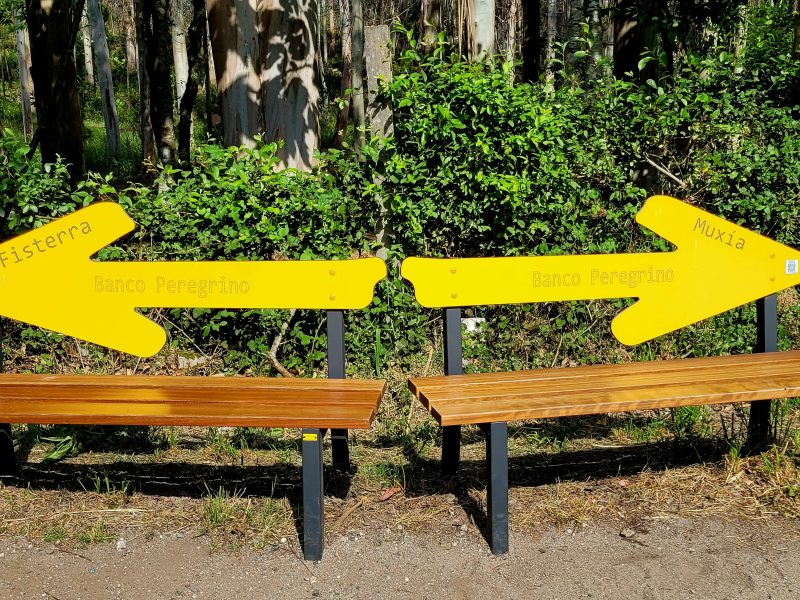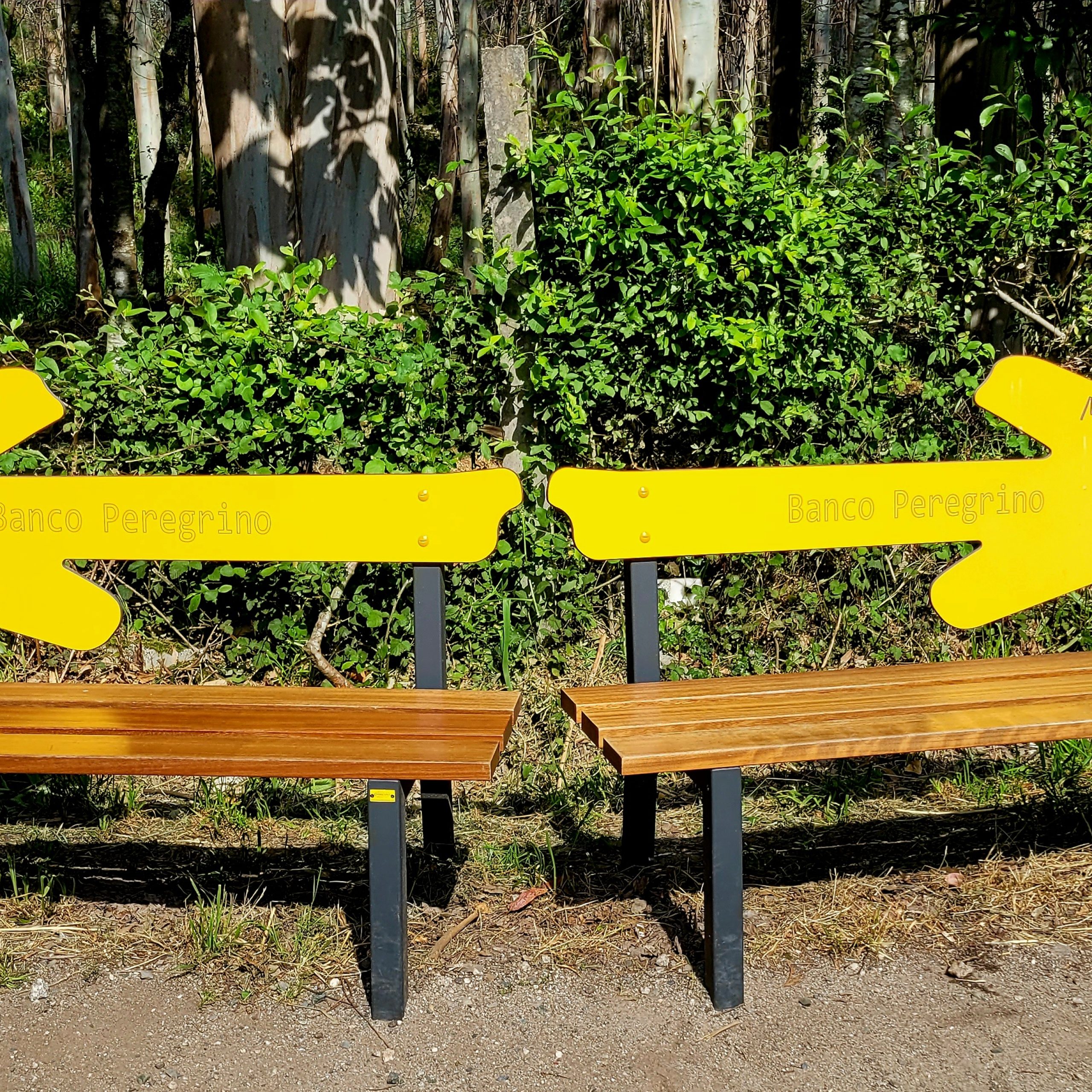The yellow arrow as a sign of the Camino de Santiago.
The mythical yellow arrow is the indisputable symbol of the Camino de Santiago. You will encounter them at every intersection during your pilgrimage to Santiago de Compostela. The yellow arrow is the only and official marking of the different routes of the Camino to Santiago de Compostela.
But what is the origin of the yellow arrow? It all started with a pastor in O Cebreiro. In this blog we explain to you exactly how this works and how the yellow arrow became the hallmark of the Camino over the years.
Back to the beginning
The yellow arrow is a relatively recent symbol. Until the 1970s, the Camino to Santiago had no signs indicating the direction of the pilgrimage route. Pilgrims who arrived in Santiago in the Middle Ages, having traveled hundreds or even thousands of kilometers, simply followed in the footsteps of their predecessors.
In the 1970s, a priest in O Cebreiro, Elías Valiña, began mapping what we now call Camino Frances. He dedicated his life to plotting the route from Roncesvalles to Santiago de Compostela. His work consisted of restoring lost parts of the pilgrimage route and marking the route so that it would be easier for pilgrims to follow the pilgrimage route.

The color yellow
But why a yellow arrow? And not a green one? Or red? According to legend, the priest began painting a yellow arrow, using leftover paint used by local workmen to mark roads. However, for José Manuel López Valiña, a descendant of the pastor of O Cebreiro, the choice of this color was not so coincidental.
“On the first trips to explore the site and mark the route, my uncle realized that it was necessary to use something that would attract a lot of attention and that would last a long time. When he arrived in France, he saw that yellow was the color used to mark mountain routes, so he decided to paint the route of the Camino de Santiago in this color,” he said.
Whatever the truth, Elías Valiña chose to mark the pilgrimage route to Santiago with yellow arrows. And it turned out to be a success. It is a simple and easily recognizable symbol, which has now become universal.
The popularity of the yellow arrow as a symbol of the Camino de Santiago eventually led the Council of Europe to declare this sign the official marking to indicate the pilgrimage routes.
This first “officialization” of the yellow arrow is included in the Declaration of Santiago de Compostela. This document was signed on October 23, 1987.

The yellow arrow gives direction
In preparation for a new Holy Year in 2021, the Consejo Jacobeo – a cooperation body between the General Administration of State and the Autonomous Communities through which the various pilgrimage routes of the Camino de Santiago pass – decided to give the marking a new impetus.
During a meeting in León, members decided to make the yellow arrow and the equally famous Camino shell the only official symbols of the Camino.
This agreement makes official signs the same on all routes and in each autonomous community. This put an end to the hodgepodge of signals, including stones, ribbons, even GR signs with their white and red markings. Furthermore, these last signs can always be found on a number of pilgrim routes.
The Consejo Jacobeo also established that the yellow arrow must be present on all routes, at every intersection and every two kilometers.
This decision also ended another controversy: that of using the yellow arrow for everything. For example, hostels, catering establishments, shops and restaurants were no longer allowed to indicate the location of their company with the yellow arrow. The symbol may only be used to indicate the direction of the Camino de Santiago.

Shell
The scallop shell is also an important symbol of the Camino to Santiago. Images of it can be found on all Caminos and in all kinds of forms. Whether they are painted on rocks, placed on the sidewalk or made from real shells, they have one thing in common: they lead you to Santiago de Compostela. However, this emblem was not designed as a direction indicator, according to the Consejo Jacobeo. That right is and remains reserved only for the yellow arrow.



Comment (0)